
Factory farming conditions and antibiotic-resistant pathogens emerging as a result of them pose an existential threat to humans in the form of zoonotic diseases. Why it’s time to produce and consume food more thoughtfully.
A delicious mix of Portuguese cuisine, South American Indian and African culinary traditions, Brazilian cuisine is rich in flavours and colours.
As it often happens, history has shaped the country’s food culture, mixing very different flavours and ingredients: the families of the conquistadores often included Portuguese husbands, South American Indian wives and servants of African origin. African cooks are appreciated in Brazil as a local proverb says “the blacker the cook, the better the food”.
The basic ingredients of the Brazilian cuisine are rice and beans. Brazilians bring these ingredients to their tables every day and they always eat main courses (called “trivial” or “prato feito”) that include other traditional foods such as grilled meat or fish with a vegetable side dish (based on pumpkin, courgette, cauliflower and okra – a slightly viscous green vegetable similar to green beans). Another local ingredient is manioc that can be cooked and is available in flour form.
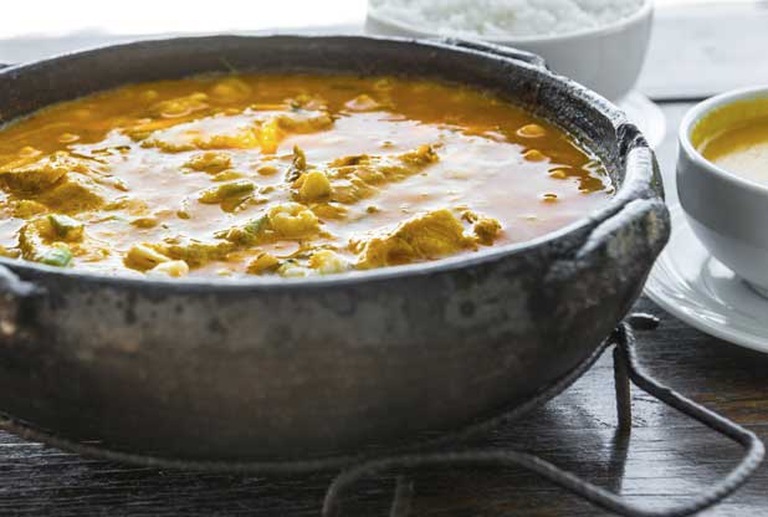
Local dishes include moqueca, stewed fish in coconut milk and dendê (palm) oil; caruru, prepared with okra, other vegetables and shrimps; the well-known feijoada, the Brazilian national dish, made from black or white beans, meat, cabbage and orange.
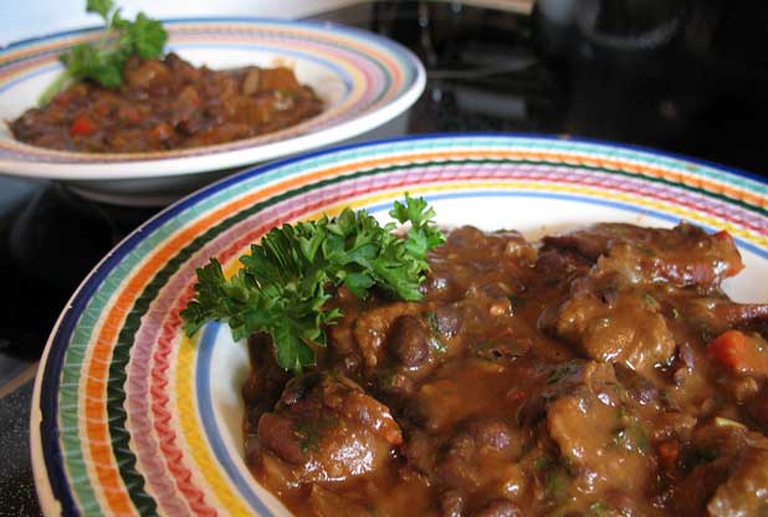
In the streets, mostly in the Northeast region of Brazil, you can easily find acarajé, a piece of roll-shaped fermented bean purée fried in palm oil and stuffed with shrimps, peanut paste, onion and garlic.
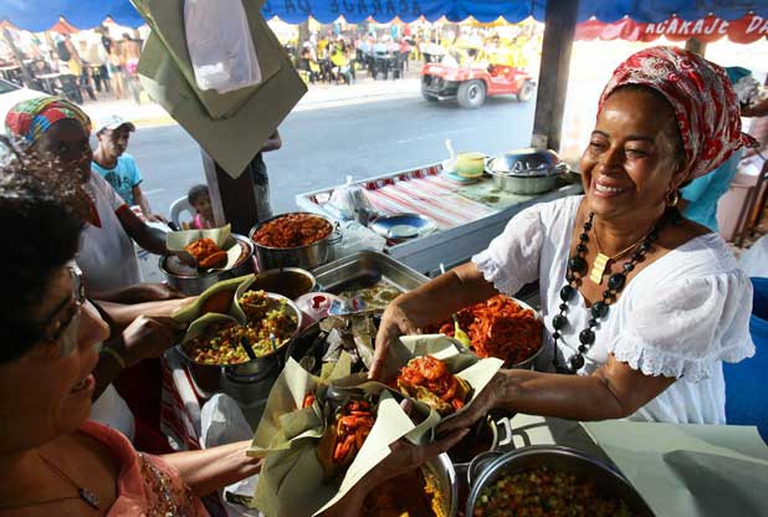
Brazilians love to flavor their dishes with fresh coriander (cilantro), a tasty and scented herb. Another aroma they commonly use is fresh minced ginger root. Their juicy and luscious fruits are employed along with manioc to prepare sweets: the most traditional sweet is bolo, a sort of cake made of fruits, roots and flavoured with spices.
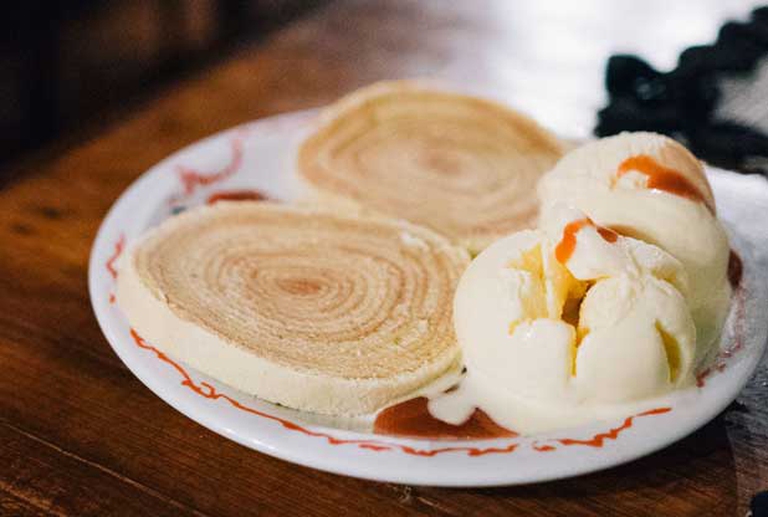
Since in Brazil it’s hot all year long, it is necessary to drink a lot. It’d be better to drink bottled mineral water (agua mineral con gas or sem gas) – avoiding that of the faucet – and limit the consumption of caipirinha: you can find this refreshing cocktail made of cachaça (a local liquor), lime juice and brown sugar everywhere (and whenever you want) and it is so good that people are often likely to abuse it.
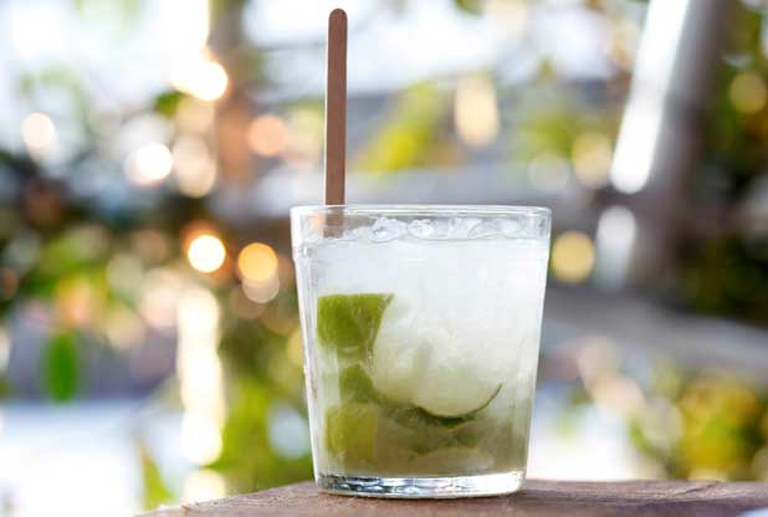
Other local specialties you can’t do without are sucos, fresh-squeezed fruits or fruit smoothies appreciated for their therapeutic properties, because they are rich in vitamins and natural antioxidants. There are plenty of varieties based on exotic or European fruits diluted in water (make sure that the water has been filtered) or milk. The latter are called vitamina. Another unmissable type of juice is caldo de cana: it is extracted from sugarcane and, besides being flavoury, it is also cheap and available everywhere. A famous travel guide to Brazil defines it as a dynamite bursting with vitamins in their pure state.
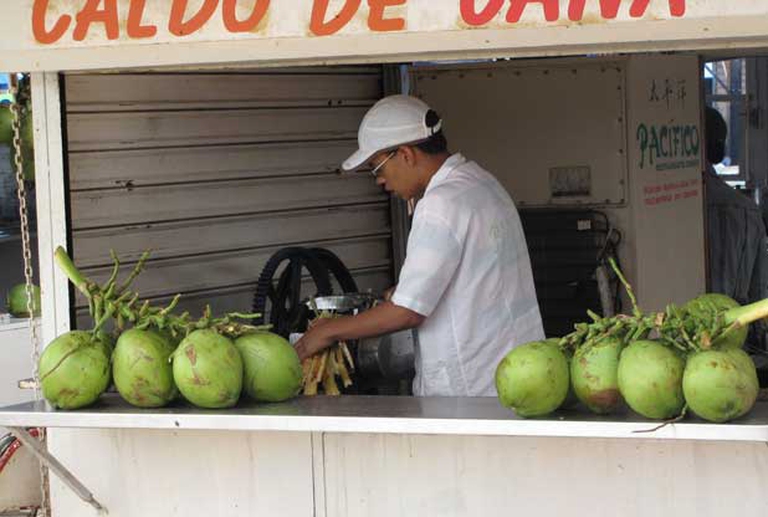
Siamo anche su WhatsApp. Segui il canale ufficiale LifeGate per restare aggiornata, aggiornato sulle ultime notizie e sulle nostre attività.
![]()
Quest'opera è distribuita con Licenza Creative Commons Attribuzione - Non commerciale - Non opere derivate 4.0 Internazionale.
Factory farming conditions and antibiotic-resistant pathogens emerging as a result of them pose an existential threat to humans in the form of zoonotic diseases. Why it’s time to produce and consume food more thoughtfully.
The world of cinema recognises the link between food choices and the climate crisis by offering vegan menus for awards season events, including at the most important of them all: the Oscars.
Let’s look at the reasons behind the growth of veganism in India, as a small yet vocal section of the population turns towards this diet and lifestyle in the largest milk producing country in the world.
by Jeffrey Y. Campbell, Manager of the Forest and Farm Facility at FAO In the Ecuadorian Amazon, Kichwa farmers grow dozens of products on tiny parcels of land. Their lands hum with biodiversity, yielding nutritious foods that have sustained families for generations. Wandering among fruit and nut trees and crops, these indigenous agroforesters fill their baskets
Mint has many health benefits, but in food it’s often accompanied by artificial green colourings. Instead, Galatea has created a green mint ice cream in a completely natural way.
We’re talking about Galatea, a company that produces semi-finished products for artisanal ice creams using high quality ingredients, natural colouring, excluding thickeners and hydrogenated fats, respecting the environment and supporting the less fortunate.
The mad rush to fake food, like fake meat made with genetically-modified soy, ignores the importance of the diversity of our foods and culinary cultures. It’s a recipe to accelerate the destruction of the Planet and our health.
Like with all foods, the quality of an ice cream can be discerned by reading its label. An expert explains how to do this, and tells us how their company steers clear of chemicals, using only natural ingredients to produce an excellent and “free” ice cream.
Quality ingredients, no artificial colouring and hydrogenated fats. These are the main features of a great ice cream. But what makes an ice cream parlour “good”, i.e. sustainable?







